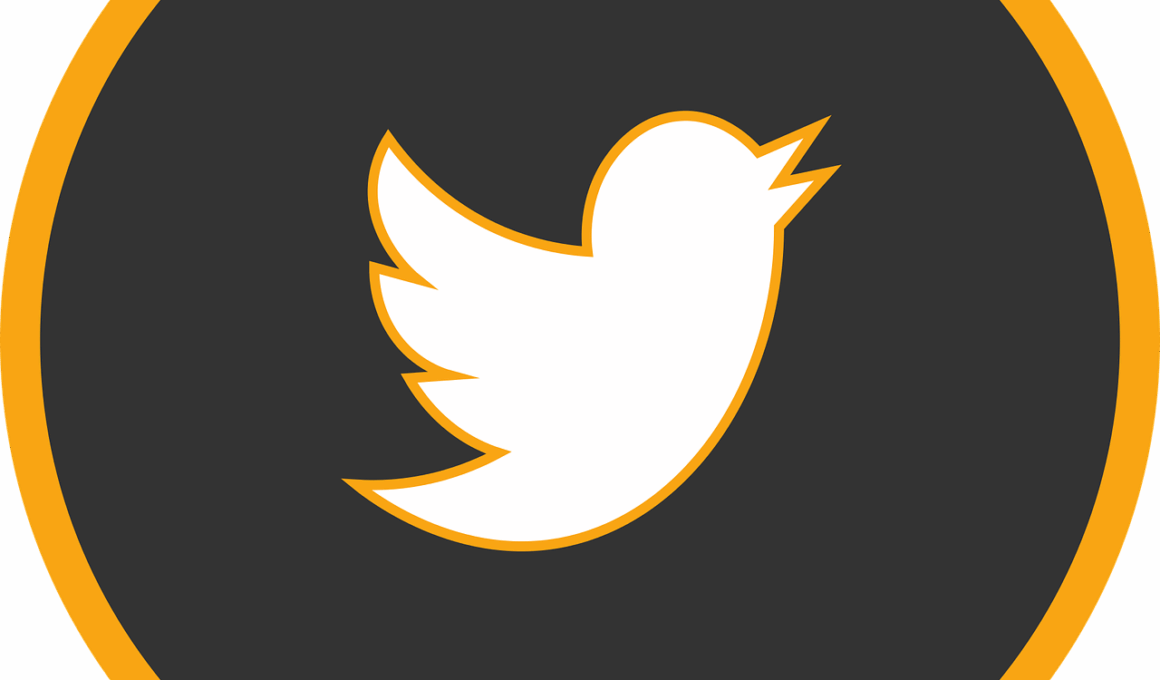Customizing Twitter Polls for Different Audience Segments
Twitter polls can be a powerful tool for engaging with your audience, but their effectiveness largely depends on how well they are tailored to specific segments. By understanding who your audience is, you can create polls that resonate more deeply and stimulate meaningful interaction. Start by identifying demographic factors such as age, location, and interests. This data can guide the themes and questions in your polls. Additionally, consider the language and tone you use; different segments may respond better to casual language while others might prefer a more professional approach. Use analytics tools provided by Twitter to gain insights into your audience’s preferences and behaviors. Data-driven decisions will greatly improve your poll’s effectiveness. Ultimately, customized polls can drive engagement, foster community, and deepen connections with your brand. Therefore, take the time to analyze your audience and tailor your polls accordingly. This will not only make your interactions more engaging but also enhance your brand’s visibility on Twitter, helping to build a loyal following that feels valued and understood. Each poll you create is an opportunity to learn about your audience and make them feel heard.
When creating Twitter polls, it’s essential to think strategically about the questions you pose. Ensuring that your poll questions are not only relevant but also provoke thought is vital. Questions should be clear and concise to prevent confusion; avoid using jargon or overly complex language that might alienate some users. It’s beneficial to use open-ended formats or multiple-choice questions that can provide valuable insights into audience preferences and opinions. A well-crafted poll can encourage interaction by inviting users to express their opinions in a fun and engaging way. Additionally, including a mix of serious and light-hearted questions can cater to different audience segments effectively. Remember, some users might be more inclined to interact with polls that incorporate humor or trending topics; it can create a sense of community and connection among followers. Furthermore, don’t forget to involve visuals such as images or emojis to enhance engagement. These elements can capture attention quickly, increasing the likelihood of participation. Keep experimenting with different formats and styles of questions to see which resonates best with your audience.
Timing is another crucial factor in maximizing the effectiveness of Twitter polls. Understanding when your audience is most active can lead to better engagement rates. Be mindful of time zones, as your audience might be spread across different regions. Research shows that tweet engagements often peak during specific days of the week and times of the day. For instance, many users are active during lunchtime and evenings after work hours. Leveraging this knowledge can significantly enhance your poll’s visibility. Utilize Twitter’s analytics tool to track when your followers are most active and align your poll posting schedule accordingly. By posting at optimal times, you increase the probability of reaching a larger audience and gaining more responses. Moreover, experiment with different posting times over various days to identify trends in engagement levels. This approach provides a clearer picture of when your content thrives. Lastly, consider the frequency with which you post polls; regular but spaced-out interactions can maintain interest without overwhelming your audience. Balancing this can contribute to a more engaged follower base.
Engaging Your Audience with Creative Poll Content
Creative content is key in capturing the attention of Twitter users. Integrating innovative ideas within your polls can make them more appealing and encourage higher participation rates. For example, using themed polls tied to seasons, events, or specific marketing campaigns can create a sense of relevance among followers. This strategy not only encourages interaction but also allows your audience to feel more connected to your brand and its values. Consider incorporating elements like humor, pop culture references, or current trends to make your polls stand out. Engaging questions that spark curiosity will entice users to participate and share with their networks. Additionally, try presenting polls as a fun game or quiz that rewards participation with insights or results that pertain to the audience. This gamification aspect can encourage users to engage more actively as they feel part of something larger. Lastly, don’t forget to showcase poll results after they conclude; this transparency fosters a sense of community as users see their contributions acknowledged and appreciated.
Engagement doesn’t stop once the Twitter poll ends; it’s essential to follow up with your audience based on the results shared. After conducting polls, take the time to analyze the data and create engaging responses to the insights gathered. Sharing your conclusions shows that you appreciate your audience’s input and value their opinions. For instance, if a poll reveals preferences for a specific product or service, consider crafting content that elaborates on how you plan to implement these preferences into your future offerings. This approach deepens the relationship with your audience and shows that their feedback drives your business decisions. Acknowledge contributors by naming them or retweeting their comments, as this can enhance community feeling and loyalty to your brand. Additionally, use follow-up polls to explore further insights or to seek clarification on the previous responses. This iterative approach encourages ongoing dialogue and interaction within your Twitter community, ultimately fostering stronger relationships. Real-time engagement and active responses contribute to a more loyal and engaged audience that actively participates in your brand’s journey.
Another aspect of effective polling is promoting inclusivity within your questions and answers. Craft questions that resonate with a diverse audience while also being mindful of cultural and social differences. When polling on topics that may be sensitive to certain groups, it’s crucial to approach with care and consideration. This means avoiding stereotypes or biased language that could alienate parts of your following. Focus on creating a positive space where everyone feels empowered to participate in your polls freely. Additionally, consider offering options that accommodate varying opinions and perspectives, allowing for more comprehensive data collection. By cultivating a culture of respect and inclusivity, you encourage wider participation and enrich the conversation around the poll. This fast-food approach to engagement strengthens your brand by positioning it as one that values diversity and actively listens to its audience. Moreover, grateful acknowledgment of diverse opinions and perspectives can foster a sense of belonging among followers, strengthening their connection to your brand and inspiring future interactions.
Conclusion: Enhancing Engagement through Effective Polling Strategies
In conclusion, leveraging Twitter polls effectively can significantly enhance user engagement when tailored for different audience segments. By understanding your demographic and their interests, crafting relevant and clear questions, and analyzing engagement data, you can create polls that invite participation and foster community. Timing your polls strategically can maximize visibility, while creative content increases the likelihood of interaction. Following up on poll results allows you to show appreciation and commitment to your audience’s preferences. Furthermore, framing your questions to promote inclusivity will cultivate a respectful environment where everyone feels comfortable sharing their views. By implementing these strategies, brands not only gain insights but build lasting relationships with their audience. This proactive engagement can lead to higher loyalty levels and continuous conversation around your brand. Don’t hesitate to experiment with different approaches and formats to keep your content fresh and your followers engaged. Ultimately, the goal is to create an inviting space where your audience feels heard and valued, turning casual interactions into meaningful relationships that benefit both parties.
When creating Twitter polls, it’s essential to think strategically about the questions you pose. Ensuring that your poll questions are not only relevant but also provoke thought is vital. Questions should be clear and concise to prevent confusion; avoid using jargon or overly complex language that might alienate some users. It’s beneficial to use open-ended formats or multiple-choice questions that can provide valuable insights into audience preferences and opinions. A well-crafted poll can encourage interaction by inviting users to express their opinions in a fun and engaging way. Additionally, including a mix of serious and light-hearted questions can cater to different audience segments effectively. Remember, some users might be more inclined to interact with polls that incorporate humor or trending topics; it can create a sense of community and connection among followers. Furthermore, don’t forget to involve visuals such as images or emojis to enhance engagement. These elements can capture attention quickly, increasing the likelihood of participation. Keep experimenting with different formats and styles of questions to see which resonates best with your audience.


